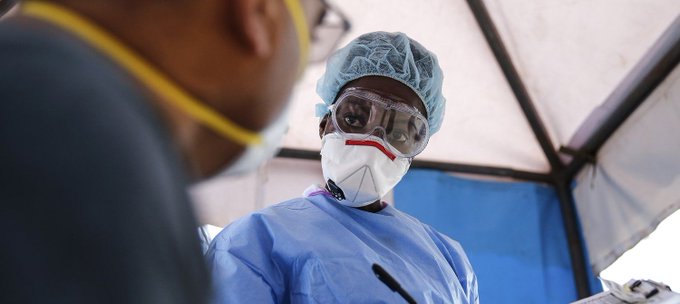Ten of the 18 nations reporting cholera outbreaks are in Africa. As of January 29, 2023, more than 26 000 cases and 660 fatalities had been documented, and the average case fatality ratio was significantly higher than the permissible level of less than 1%. That is almost at 3% right now.
“Starting in 2021, there were several epidemics in the area, but nations were able to quickly respond to them and contain them. In 2022, fewer nations were afflicted, and there were fewer cases altogether. The number of instances in 2023 has significantly increased. In the first month of 2023, there were 26 000 recorded cases, which is 30% more cases than there were in 2022 as a whole.
According to Patrick Otim Ramadan, WHO Africa’s Incident Manager for Regional Cholera Response, “We are concerned that if this trend that we have seen in January continues, we will far exceed the number of cases that we have seen in 2022 and… put significant strain on the health systems in the countries that are affected as well as significant demand on the medical counter majors that we need to respond to this.”
With more than 1,200 fatalities and more than 40 000 cases reported from all 29 districts since March 2022, Malawi is the most severely cholera impacted country in Africa. After tropical storm Ana and cyclone Gombe, which both made landfall in Southern African nations in January 2022 and March 2022, respectively, the outbreak began in the Machinga district. Destruction from the cyclones resulted in floods, which forced communities to relocate and left the country of Southern Africa dealing with its worst cholera outbreak in two decades due to a lack of access to safe water, sanitation, and hygiene.
According to Malawi’s Secretary for Health, Charles Mwansambo, there are 500 cases reported each day.
“We have recognized that there are certain things we need to take to stop cholera from spreading in Africa. By incorporating political, religious, and community leaders, we are now enhancing our communication and community participation. In all the districts, we want to apply minimal control measures at once. Based on the most recent data, we have now updated the cost response, which now comes to about US$59 million. We have only been able to secure US$18.6 million so far, leaving us with a shortfall of roughly US$40 million. We are requesting assistance from all allies both inside and outside the nation to put an end to this outbreak “Mwansambo added.
The epidemics that are currently occurring in Somalia, Kenya, Mozambique, Zambia, Cameroon, Nigeria, the Democratic Republic of the Congo, Burundi, Ethiopia, and Malawi are said to be influenced by climate change and a few humanitarian crises.
“In a dangerous scenario, which we are currently witnessing, cholera triggers are getting stronger and its death toll is rising due to conflict and extreme climatic occurrences. African nations must increase their readiness to swiftly identify cases and mount thorough, prompt responses. We’re helping governments strengthen crucial control measures to put an end to these epidemics as soon as possible, “the WHO’s regional director for Africa, Matshidiso Moeti, stated.
WHO sent 65 experts, the majority of whom were headed for Malawi, to five African nations. “Ethiopia, Somalia, and Kenya are all being impacted by the droughts in the broader Horn of Africa. The cholera outbreak in Somalia is also occurring in drought-affected areas, as it is in one of the Garissa drought-affected areas in Kenya. The supply of clean drinking water for residents in such places is substantially impacted by the drought “Ramadan declared.
A further US$ 6 million was paid out by WHO to launch the emergency cholera responses in Kenya, Malawi, and Mozambique.
Another factor to take into account is the cross-border transmission between Somalia and Kenya, said Ramadan. WHO encourages countries to work on cross-border collaborations, and joint surveillance interventions so that those outbreaks can be contained, he said.
“The solution requires a multi-sectoral response, and the solution is providing safe clean water. Community members need to visit their health facility early so they can start treatment as soon as possible to prevent fatalities,” Ramadan said.
According to WHO, the increase in global cholera outbreaks is putting a strain on the available doses of the oral cholera vaccine routinely used to interrupt transmission in places without safe drinking water.
One such area is the Democratic Republic of Congo, where fighting between the country’s army and the armed groups resumed, leading to almost half a million people in North Kivu fleeing their villages. Since then, the region has seen an increase in cholera cases. During the clashes, people have had to flee their homes and be without sufficient food, water, and access to sanitation facilities which are critical to prevent the further spread of cholera.
In response to the current outbreak, Save the Children, an organization active in the DR Congo since 1994 is stepping up its health and hygiene promotion activities by providing water and sanitation inputs, and essential drugs to health facilities in Nyiragongo – hosting the largest number of displaced people. Four of five cholera cases in the region are children.
About 3.3 million cholera vaccine doses were delivered to DR Congo, Kenya, and Mozambique through the International Coordinating Group on Vaccine Provision since the beginning of 2023. This initiative aims to manage emergency supplies of vaccines and is a partnership of the International Federation of the Red Cross and Red Crescent Societies, Médecins sans Frontières United Nations Children’s Fund, and WHO.
The focus is on effective surveillance, rapid response, and immediate containment before the disease spreads.
Read More at: https://www.britishherald.com/bh-magazine/













